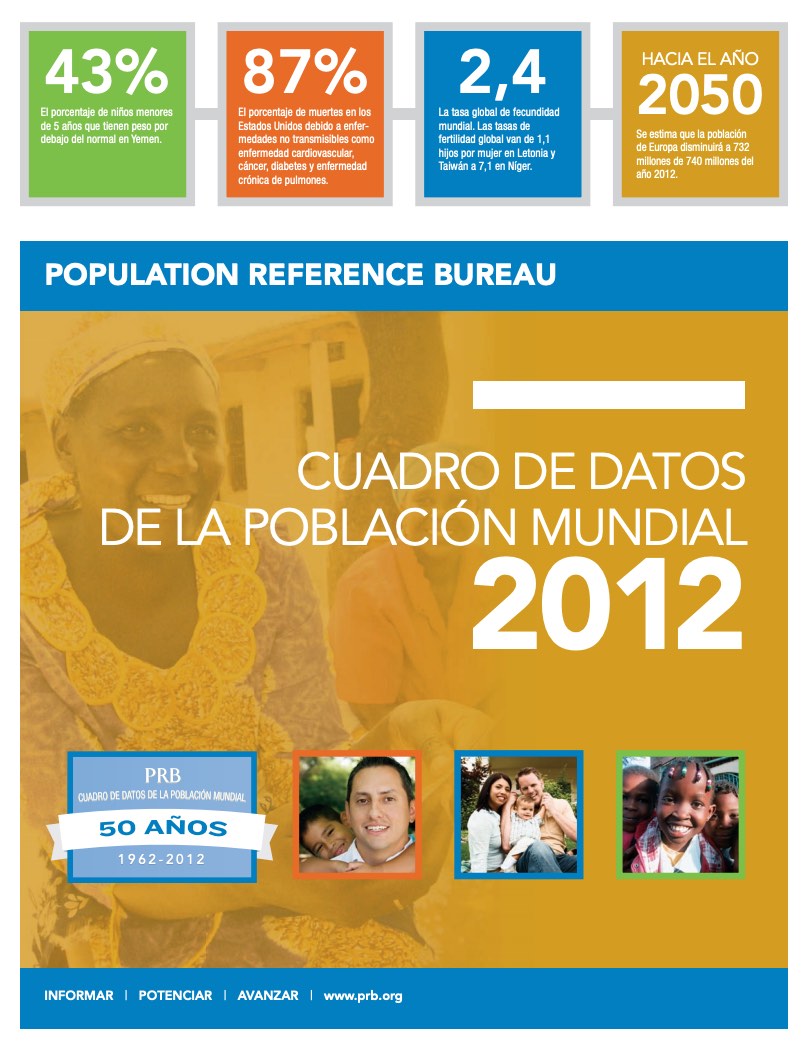Cuadro de datos de la población mundial 2012 (PDF)
Nearly all future population growth will be in the world's less developed countries, and the poorest of these countries will see the greatest percentage increase.

Nearly all future population growth will be in the world's less developed countries, and the poorest of these countries will see the greatest percentage increase.
(2004) On July 23 of this year, Arati Pashi of Calcutta (Kolkata) made the news when she died after profuse bleeding at Calcutta Medical College and Hospital, a premier medical facility in that city. A doctor who was supposed to be on call was absent, and the medical college’s superintendent ordered an inquiry. The investigation revealed that Pashi had been suffering from cervical cancer.
(2015) Senegalese journalist Maimouna Gueye won a 2015 Global Health Reporting award from the International Center for Journalists for stories she wrote after participating in a program organized by the Population Reference Bureau (PRB) in southern Senegal and the capital, Dakar.
(2001) Europe has the lowest fertility rates in the world. In 2000, the average for the region was 1.4 children per couple, and it ranged from 1.1 children in Bulgaria and the Czech Republic to 2.2 children in Albania.

The first in a series of three blogs on our new "Losing More Ground" report, published November 30.

The conference offered researchers and practitioners a platform to discuss new work in 272 sessions and hundreds of poster presentations.
(2013) With technology producing more and cheaper ways to determine the sex of a fetus, fewer girls are being born—an estimated 1.5 million of them every year. They are sometimes referred to as the "missing" girls, the ones who were never born because of the premium some societies place on boys.
(2008) Baby boomers, many on the cusp of retirement, are moving out of densely populated states in favor of less populated areas, according to new data from the U.S. Census Bureau.